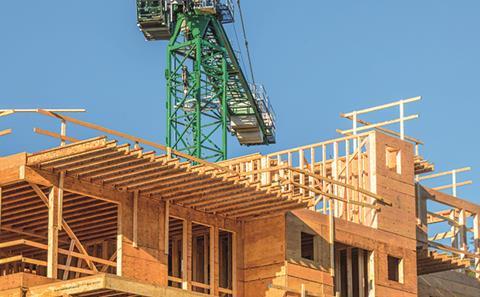At last, after 35 years of undersupply, the major parties have woken up to the crisis in the residential property market.

By the time this article is published, the main manifestos will be out and doing the press rounds. But even before they were published, we had a fairly clear picture of how the politicians were proposing to resolve the housing crisis.
Let us see if I am on the same planet as the policymakers. To set the scene, this is a crisis with deep roots. There are 1.2 million families in England on local authority waiting lists for a social tenancy. The average age of first-time buyers is 30. In turn, they will need an average income of £41,000 - nearly double the UK’s average wage - to step on to the ladder.
As a result, a whole generation of younger people are giving up hope in the UK’s housing sector. Research from Aviva suggests 1.23 million people aged between 25 and 34 live with parents (the so-called boomerang generation) rather than rent or own their own home. There is a fundamental crisis of confidence here that any incoming government must resolve.
The Conservatives have pledged £1.4bn to fund new council housing, delivered partly through simplified compulsory purchase rules; a proportion of these new homes would also be available to buy after 10 years.
The Conservatives’ proposed sum provides just 5,600 new homes
These are all positive steps but, at an estimated £250,000 for a council house unit, the Conservatives’ proposed sum would provide just 5,600 new homes.
The party has also made no mention of lifting the 3% stamp duty surcharge for multiple home ownership, which renders the majority of new-build opportunities unviable for build-to-rent (BTR).
Planning bottleneck
Labour would build 100,000 new homes a year by rationalising the planning system. Planning is a major bottleneck. A disconnect persists between pro-build central government and more Nimby local authorities, so it is a welcome strategy.
However, if we want approvals for affordable homes, legislation is needed to construct them, without which build-for-sale will continue to outbid BTR. Labour has also confirmed that rents would be capped at inflation and tenancies should be at least three years, neither of which are investor-friendly policies and may even deliver the opposite of what they are intended to (high rents; low security of tenure).
As for the other parties, the Lib Dems would penalise land bankers and scrap exemptions on smaller schemes for their obligation to provide affordable housing, which suggests they do not understand the existing viability test. The Green Party wants to introduce full-scale rent controls, which will in effect shut down any new investment from the private sector.

So there is a mixed picture from the parties. Does the private sector offer any better news? A little. There is £27.7bn of institutional equity waiting to be spent on BTR, creating about 110,000 homes, less than last year’s deficit but more meaningful than the Conservatives’ £1.4bn. Even better, many of the investors behind this money want to supply flats for young professionals, the boomerang generation referred to earlier.
Rather than slapping 3% stamp duty on these investors, we should be encouraging the creation of new homes. It drives employment in the construction industry, regenerates town centres and attracts major overseas investment, and it need not drain the Treasury. More importantly, it enables the parents of boomerang kids to regain their space and their sanity.
So which party is going to make it happen after 8 June?






























No comments yet